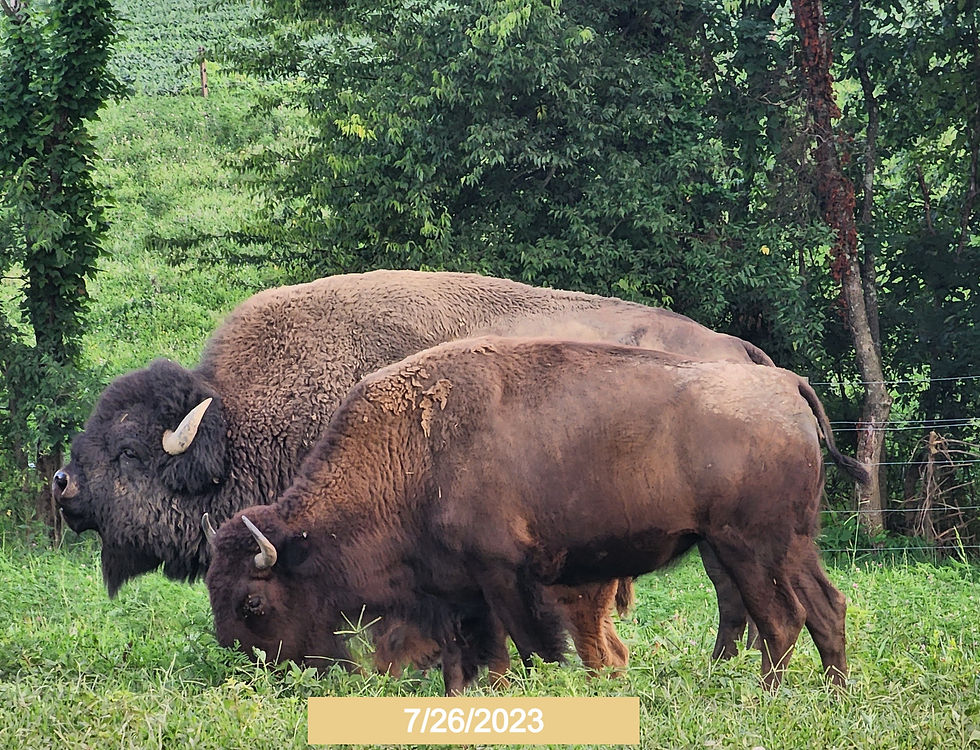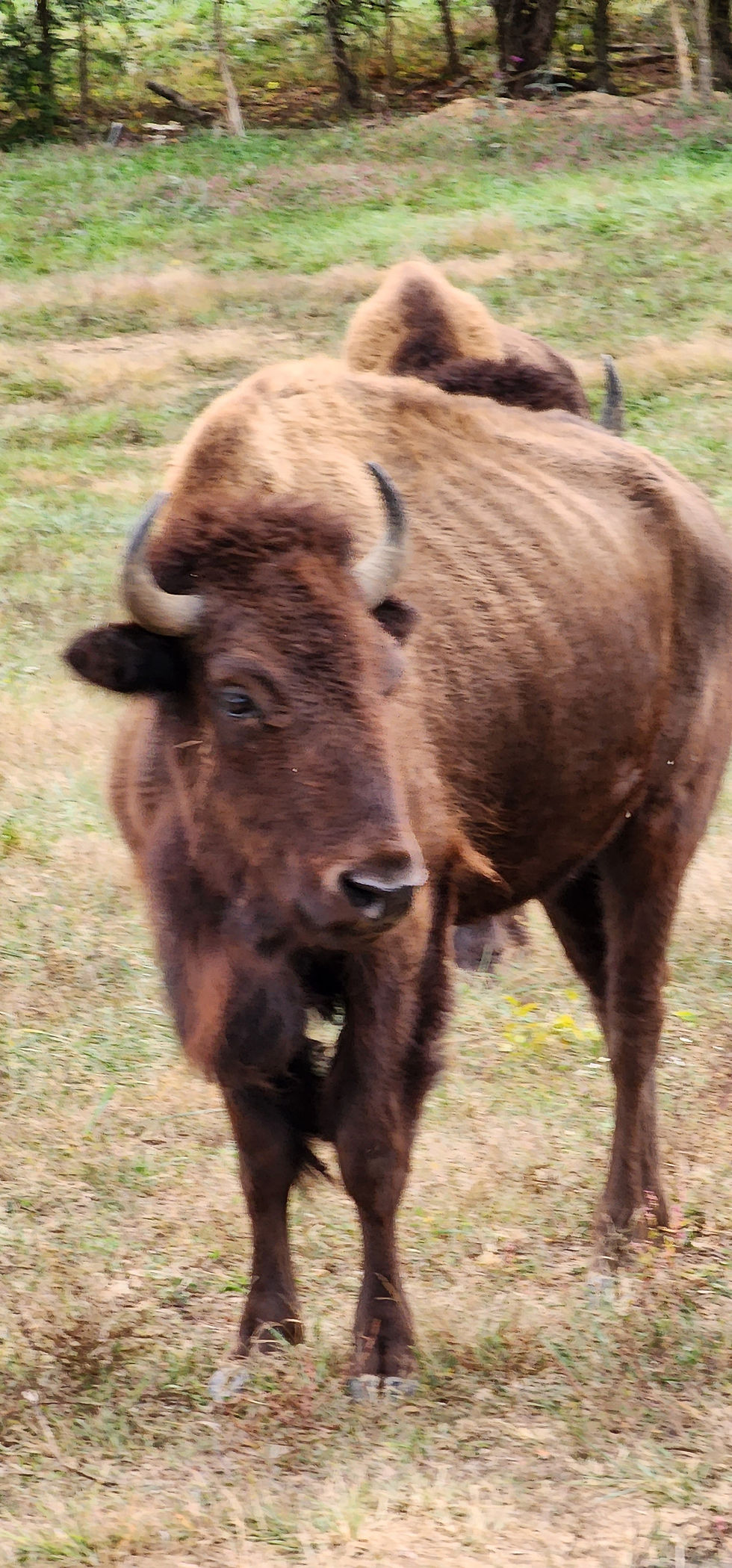I wrote about our young cow, Midge, last month and our decision to remove her from the herd (here).
We were afraid there may be some viral or bacterial issue that could impact the entire herd if not attended to. We had no other reason to suspect health issues for Midge, her fecals were all coming back within a normal range, her coccidia was under control and the counts were lower than they had been in early spring (when she was pregnant and we didn't know).
So, when the call came in this afternoon from our Vet at East Tennessee Veterinary Hospital
with the necropsy report from UTCVM I held my breath.
I had been told by some that I was going to be upset with the results, that it was most likely going to show she was eat up with parasites! I had been told by others it would show a disease, such as Johnes Disease, or some tick-borne illness.
And, frankly, I've spent more than a few nights wondering if I failed this little cow in some form of poor husbandry skills or attention.
But, as Doc read off the results, she stopped and declared "I'm really sorry to have to report this, but...." and my heart literally dropped. She went on, "...there really isn't a conclusive finding!"
Midge had zero parasite counts (of any and all potentials), her organs were all healthy with the exception of a few cysts on the heart (which the report indicates is normal in the species), no internal organ injuries , no bleeds, nothing -- except 3 broken ribs and so, the conclusion?
Stress.
I had been more right about what was happening with her than not. And, that's not to toot my own horn. That's me sharing an almost tearful relief!
As a recap, Midge had bred at just 2 years of age unbeknownst to us. She calved about 2 months later than the rest of the herd, and surprised us with a July 4th calf (whom we named Liberty). She never appeared pregnant. She never "acted" pregnant. And, we had no reason to suspect she was pregnant!
But she was. And, Midge was a small buff, she wasn't a beefy and hardy cow with a ton of experience. She was near the bottom of the social ladder within the herd, meek and mild mannered, but playful and curious. Her little heifer calf was built just like her, small framed.

Midge did great as a new mommy. She nurtured and nursed attentively, she was protective and careful with her new baby. Midge was putting on good weight, her body condition was really filling out as she was maturing into a productive cow...
And then, at the end of rut, one of the yearling bulls chased her relentlessly for 3 days. Labor Day weekend, I considered trying to isolate her in the corrals just to give her some rest, but considering Liberty was so small and might get out to be with the herd, I chose to leave her with the herd. Finally, on Labor Day Monday, the pursuing had stopped. We checked the herd that evening and noticed she seemed gimpy, and the yearling bull appeared exhausted. But they had rejoined the herd.

From that moment forward, she was "off" and by mid September I was seeing signs that concerned me. I ran fecals, watched her movements, monitored her appetite and intake, her socializing and mothering. She was doing "normal" in those aspects. But she was not feeling well, so I believed she had injured herself, a pulled muscle, a twisted leg, something during the three-day chase, that had her dealing with pain.
But after a month of allowing her time to heal from a potential injury, and knowing via the fecal tests that parasites were not a culprit, she really started falling off.
We went through part of October, running additional tests, scheduled a vet visit, and was ensuring she was getting plenty of supplement, minerals, and clean water.
She continued to degrade however. And, by the first week of November she was struggling. Movement was limited, she was exhibiting pain, and she was growing so weak she was pushing her calf off.
So, we culled her. We had to rule out anything that might eventually spread to the rest of the herd.
My suspicions were this was an injury and stress issue. But we needed to know without guessing. I'm glad we did, because the necropsy results seems to confirm this suspicion.
Next hurdle? What can I do to correct the problem so I reduce risk of a repeat in the future? Reduce the number of bulls? We have three coming out of the herd in January, which might reduce the risk of a repeat in the future.
We've also been working to purchase additional lands tied up with a defaulted USDA loan program in back of our land. As is most always the case (and why I refuse to work with), the government moves s-l-o-w. We think we might be nearing the finish line with them and hope to have the additional lands secured and fenced by spring of 2024 (I might be a little optimistic, but say a little prayer if you think of it). This will help by adding roaming room, thus relieving pressure that might cause stress or activities that are normal buffalo behavior that results in injury.
But, this is also one of the differences I'm noting in when comparing raising bison (as cattle/livestock operations) and raising buffalo (in a natural and conservation type environment). As I have stated repeatedly, we do not rotate our animals, we do not separate them, we don't wean calves...our buffs live here as they would have 200 years ago -- with the unfortunate exception of being confined within the property boundaries.
So, things like this happen in nature, we intervened with Midge to avoid unnecessary suffering (culling her) rather than letting nature take her painfully. We left her calf amongst the herd, as would have occurred in their wild and natural habitat. We chose not to pull the calf into the corrals and separate her for bottle feedings. She had to either make it, learning buffalo behavior and social skills - ie, survival instincts, or not.
It's how we run Buffalo Ridge Farm. And, that isn't always easy, sometimes.










Comments